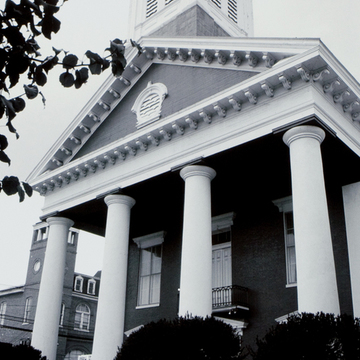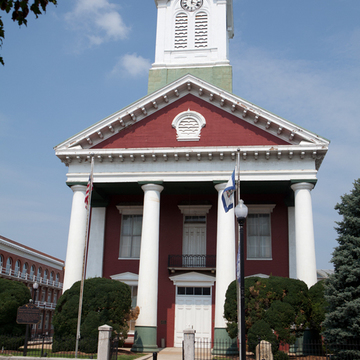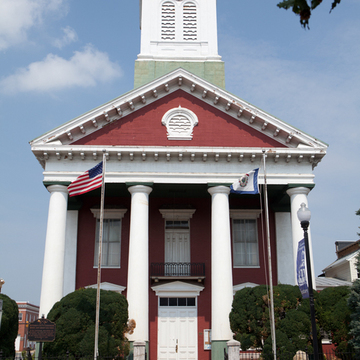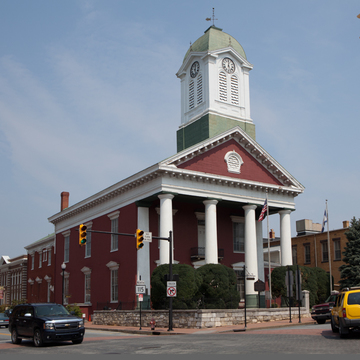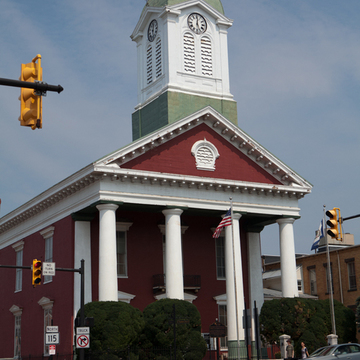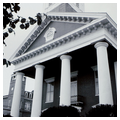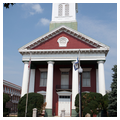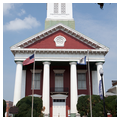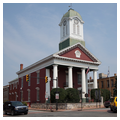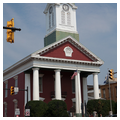The first courthouse built on this site in 1803 was destroyed by fire. As shown in numerous woodcuts and prints, its replacement, the nucleus of the present building, was a Greek Revival structure fronted by a pedimented Doric portico and surmounted by a square cupola, or belfry. The roof and interior were destroyed by cannon fire during the Civil War, and the building stood vacant between 1865 and 1872, when county courts met in Shepherdstown. An 1869 account provided a graphic description of its condition: “[The courthouse] maintains its walls and outlines, and the four brick and plaster Doric columns before it are still standing; but the roof is reduced to a few beams; the whole interior is torn out, and the edifice has now only one floor, the cellar, and is, to speak truthfully, the cess-pool for all the vagrants in the village.”
After the war, county officials attempted to sell the building, hoping to ensure that the court would remain in Shepherdstown. Charles Town partisans, arguing that Charles Washington had willed the property to the town, not to the county, forestalled the attempted coup. The building was renovated in 1871–1872, and although the old walls and columns were kept, Phillips and Cockrill did not attempt to replicate original features. Their most noticeable change was a new cupola, built to house the town clock. Larger and more florid than the original, it overpowers the facade. Humorist
The Mulletts' rectangular rear addition, dating from 1910, sensitively copies the older building's salient architectural features at a reduced scale and a lower height. A still later annex containing the sheriff's office and jail extends the courthouse the full depth of its city block. Also of brick, the Georgian Revival annex is trimmed with limestone, and unlike the earlier rear wing, makes a pronounced architectural statement of its own.
The Jefferson County Courthouse has witnessed two treason trials. John Brown, captured in nearby Harpers Ferry, feigned illness during his trial, and—as woodcuts attest—lay in the courtroom on a cot during the deliberation. On October 26, 1859, a grand jury indicted him for murder, treason, and inciting a slave insurrection. A petit jury declared him guilty of all charges on October 31, and he was condemned to die. The sentence was carried out on November 2 when Brown was hanged in an open field on the town's southern outskirts (see JE5.1). The second treason trial began in the courthouse in 1922, when twenty-four miners who had participated in the mine wars in the state's southern coal fields were tried. The change of venue had been ordered because of prejudices prevailing in the coalfields, but when it became evident that Jefferson County jurors were no more impartial than their southern counterparts, it was moved again.










